In today’s customer-centric world, call centers are at the forefront of a company’s customer experience (CX) strategy. Their success depends on the quality of service delivered, which is closely monitored through Quality Monitoring (QM) practices. However, many call centers struggle with inadequate or ineffective QM, leading to hidden costs that go unnoticed until they undermine profitability, customer satisfaction, and overall operational efficiency. This blog explores the repercussions of poor quality monitoring and the far-reaching implications it can have on a business’s bottom line.
1. What is Quality Monitoring in Call Centers?
QM in call centers involves evaluating and measuring the performance of agents to ensure that they meet predefined standards and deliver consistent customer service. QM typically includes reviewing call recordings, analyzing customer interactions, assessing adherence to scripts, and identifying opportunities for training and development.
2. The Repercussions of Poor Quality Monitoring
Effective QM programs can lead to higher customer satisfaction, improved agent performance, and cost savings. But when done poorly, the consequences can extend far beyond low-quality interactions.
2.1. Impact on Customer Experience
One of the most significant costs of poor QM is a subpar CX. Customers today have high expectations; they demand quick, accurate, and empathetic responses to their queries. When QM is ineffective, the following occurs:
• Inconsistent Customer Service: Poorly monitored agents may deliver inconsistent service. While one customer receives excellent service, another may be left dissatisfied. This inconsistency can tarnish the brand’s reputation.
• Higher First Call Resolution (FCR) Failure Rates: Inadequate QM fails to identify agents struggling to resolve issues in the first call. As a result, repeat calls increase, frustrating customers and raising costs.
• Negative Word-of-mouth: A poor CX can lead to negative reviews and complaints on social media, damaging the company’s reputation and brand loyalty.
Hidden Cost: Compliance and legal failures result in fines, legal settlements, and reputational damage and attract the costs of implementing corrective measures.
2.2. Increased Operational Costs
Call centers thrive on efficiency, but poor QM can undermine operational cost management in several ways:
• Longer Average handling times (AHT): Without effective QM, agents are likely to make mistakes. This leads to longer call durations, increased call volumes, and higher labor costs.
• Repetitive Issues: Poor QM often overlooks systemic issues. If agents frequently encounter the same customer problems without a proper resolution, it indicates a larger process problem. Failure to monitor and address these issues can lead to repetitive calls, increased workloads, and wasted resources.
• Higher Training Costs: Inefficient monitoring means gaps in agent training. This necessitates repeated or additional training sessions, adding to operational expenses.
Hidden Cost: These issues lead to increased call center costs through longer handling times, repeated interactions, and inefficient resource allocation.
2.3. Reduced Employee Morale and Productivity
Customer representatives are a call center’s greatest asset. However, when QM fails to support agent’s needs, productivity and morale often take a hit. This results in:
• Lack of Constructive Feedback: QM should provide actionable insights and constructive feedback to help agents improve. Poor QM leads to unclear or inadequate feedback, causing agents to feel undervalued or unsupported.
• Burnout and High Turnover: When agents consistently face frustrated customers without receiving adequate support, their stress levels increase. This leads to higher turnover rates, recruitment costs, and onboarding times for new hires.
• Limited Career Progression: Effective QM systems identify high performers and help them grow professionally. Poor QM can lead to a lack of motivation, as agents may feel their hard work is unrecognized or unappreciated.
Hidden Cost: The aforementioned issues promote increased recruitment and training costs due to high attrition, along with decreased productivity and engagement.

2.4. Compliance Risks and Legal Issues
Compliance is paramount in heavily regulated industries like finance, healthcare, and telecommunications. Poor QM exposes businesses to compliance risks:
• Non-Adherence to Regulations: Ineffective QM fails to detect instances where agents deviate from compliance scripts or fail to follow data protection protocols. This can result in severe penalties and fines from regulatory authorities.
• Data Security Vulnerabilities: Poor monitoring of data-handling practices can lead to data breaches or lapses in customer confidentiality.
• Legal Disputes: Customers may lodge complaints or legal claims against a company due to poor service, breaches of privacy, or other issues that could have been prevented with proper quality control measures.
Hidden Cost: Compliance and legal failures result in fines, legal settlements, reputational damage, and attract the costs of implementing corrective measures.
2.5. Lost Business Opportunities
Call centers are often the first point of contact between a business and its customers. Poor QM can lead to missed opportunities.
• Failure to Identify Upselling or Cross-Selling Opportunities: Inadequate QM often misses chances to coach agents on recognizing sales indications or identifying opportunities for upselling and cross-selling.
• Missed Feedback: Customers provide valuable feedback during interactions. Poor monitoring systems may fail to capture these insights, preventing businesses from making customer-centric improvements.
• Inconsistent Brand Image: A lack of quality standards leads to inconsistent messaging, eroding customer trust, and diminishing brand loyalty.
Hidden Cost: Poor QM can result in losing growth opportunities by missing out on revenue growth, reduced brand equity, and less effective sales initiatives.
2.6. Ineffective Performance Management
Performance management is crucial for call center operations, but poor QM can lead to:
• Misaligned KPIs: If QM does not align with the overall business strategy, agents may be evaluated on metrics that do not support the company’s goals.
• Poor Data Accuracy: Ineffective QM can lead to inaccurate data collection, resulting in flawed reports and misinformed decision-making.
• Lack of Process Improvement: When QM fails to identify areas for process improvement, inefficiencies persist and worsen over time.
Hidden Cost: Due to poor QM, the business suffers bad decision-making, wasted resources on ineffective strategies, and the inability to adapt to changing customer needs. This leads to revenue and goodwill losses.

3. How to Avoid the Hidden Costs of Poor Quality Monitoring
To mitigate these hidden costs, businesses must prioritize building robust QM systems that emphasize:
• Regular Training and Coaching: Provide continuous training to the agents based on insights and findings from QM sessions. Invest in continuous training and upskilling to empower agents with the confidence and skills they need.
• Use of Advanced Analytics: Leverage data analytics to capture meaningful patterns in customer interactions and drive continuous improvement.
• Feedback Loops: Establish two-way feedback mechanisms that encourage agents to voice their concerns and suggest improvements along with considering the customer’s feedback.
• Boost Agent’s Morale: Boosting agent motivation is a key to minimize the hidden costs of poor QM.
Create a supportive culture that values agents’ input and promotes collaboration and growth paths. Recognition programs and performance incentives can further drive engagement and commitment to deliver top-quality customer service.
• Compliance Audits: Implement thorough compliance monitoring to ensure regulatory adherence and minimize the chances of fines and penalties.
• Customer-Centric Metrics: Shift the focus from operational metrics to customer-centric KPIs such as customer satisfaction, first-call resolution, and empathy.
Conclusion
Poor quality monitoring in call centers goes beyond missed calls and unsatisfactory interactions. It impacts customer retention, operational efficiency, employee confidence, compliance adherence, and business growth. To minimize these hidden costs, companies must invest in robust quality monitoring practices that prioritize continuous improvement and align with broader business objectives. By doing so, call centers can enhance customer satisfaction, reduce operational inefficiencies, and build a high-spirited workforce, ensuring long-term profitability, growth, and success.
——
Five Strategies To Improve Customer Retention
https://www.forbes.com/councils/forbescommunicationscouncil/2023/09/06/five-strategies-to-improve-customer-retention/
93% of people were more likely to be repeat customers at companies with excellent customer service.
https://visionpoint.systems/statistic/93-of-people-were-more-likely-to-be-repeat-customers-at-companies-with-excellent-customer-service/
50 Customer Satisfaction Stats to Know for 2024
https://www.zonkafeedback.com/blog/customer-satisfaction-stats
Average Customer Retention By Industry (2024)
https://explodingtopics.com/blog/customer-retention-rates
39 Call Center Statistics You Need to Know in 2024
https://www.invoca.com/blog/statistics-call-center-managers


